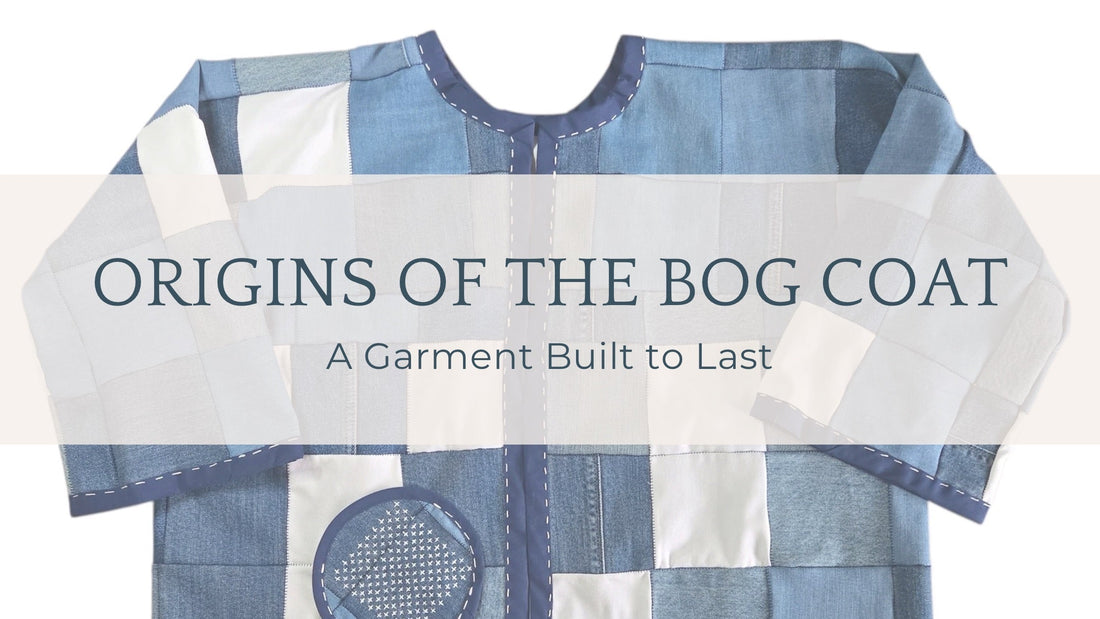
Origins of the Bog Coat: A Garment Built to Last
What Is a Bog Coat?
The “bog coat” (also called a bog jacket or blanket-coat style) refers to a garment built from simple geometric construction, not from complex pattern pieces. Its appeal lies in minimal cuts, few seams, and efficient use of fabric. These qualities align it with zero-waste or low-waste clothing traditions.
Some describe it as a “no-pattern” or “rectangle coat” method: you start with a large rectangle, make a few cuts for sleeves or front opening, and sew seams to assemble a coat. Many makers note that the basic method requires minimal tailoring skills and emphasizes volume and drape.
Earliest Inspirations & Mythic Origins
Because the bog coat construction is so simple, folks sometimes connect it to ancient finds like garments preserved in peat bogs. One bog jacket recovered in Denmark is often evoked in descriptions of a “bog coat” archetype: a rectangular cloth with minimal seams, preserved by the tannins in peat. Though archaeological evidence is sparse and often mythologized, this idea endures because of the coat’s elegant simplicity.
Balenciaga’s One-Seam Coat: Simplicity as Revolution
In 1961, Balenciaga debuted their now-iconic One-Seam Coat. Cut from a single piece of fabric that forms both the sleeve and back, it was a masterclass in restraint and structure. Proof that simplicity can be revolutionary. I often think of that design when working on a Bog Coat: both celebrate the beauty of form, construction, and the quiet power of a well-considered pattern.
How a Bog Coat Is Constructed
Here’s a generalized breakdown of how makers today approach a bog coat:
- Choose Your Rectangle:The width is typically based on the wearer’s wingspan or across-back measure, and the length is the desired finished length plus seam allowances.
- Mark and Cut Slits / Openings: For sleeves and the front opening, a few well-placed cuts are made. Some versions only require two or three cuts and folds to form functional garment shapes.
- Sew Seams: The cuts are folded and stitched, often with seams along the arms and sometimes a central back or front seam. The minimal seams keep the garment structure simple.
- Add Details / Personalization: While the core structure is simple, makers often add belts, pockets, hoods, collars, or decorative stitching (such as sashiko or visible mending) to make the piece functional and unique.
Many contemporary interpretations retain the minimal skeleton but layer expressive elements, such as patchwork, texture, mending, visible stitch, to bring the coat fully into the realm of wearable art.
Why the Bog Coat Resonates Today
- Simplicity & Accessibility: It allows makers with limited patterning experience to create dramatic, wearable garments.
- Zero-waste & Material Efficiency: Because you begin with a rectangle and make minimal cuts, fabric waste is reduced.
- Customizability: The blank canvas nature makes the bog coat a perfect base for patchwork, sashiko, and artistic embellishment, very much in line with Stitch & Salvage’s philosophy. You can turn a basic form into something soulful.
- Historical & Mythic Legacy: Though often romanticized, its narrative of ancient garment forms gives it a mythic quality that fits a brand rooted in repair, heritage, and slow fashion.
Related Conversations & Further Reading
Want to add sashiko to your bog coat? My post “A Beginner’s Guide to Sashiko” details how to begin mending textile pieces with visible stitching.
Curious about how fashion intersects with waste and renewal? Check out “Tackling Textile Waste in Canada” to see how repair and reuse matter now more than ever.







